Old Bust Head Brewing Company Debuts New Carbon Capture Technology
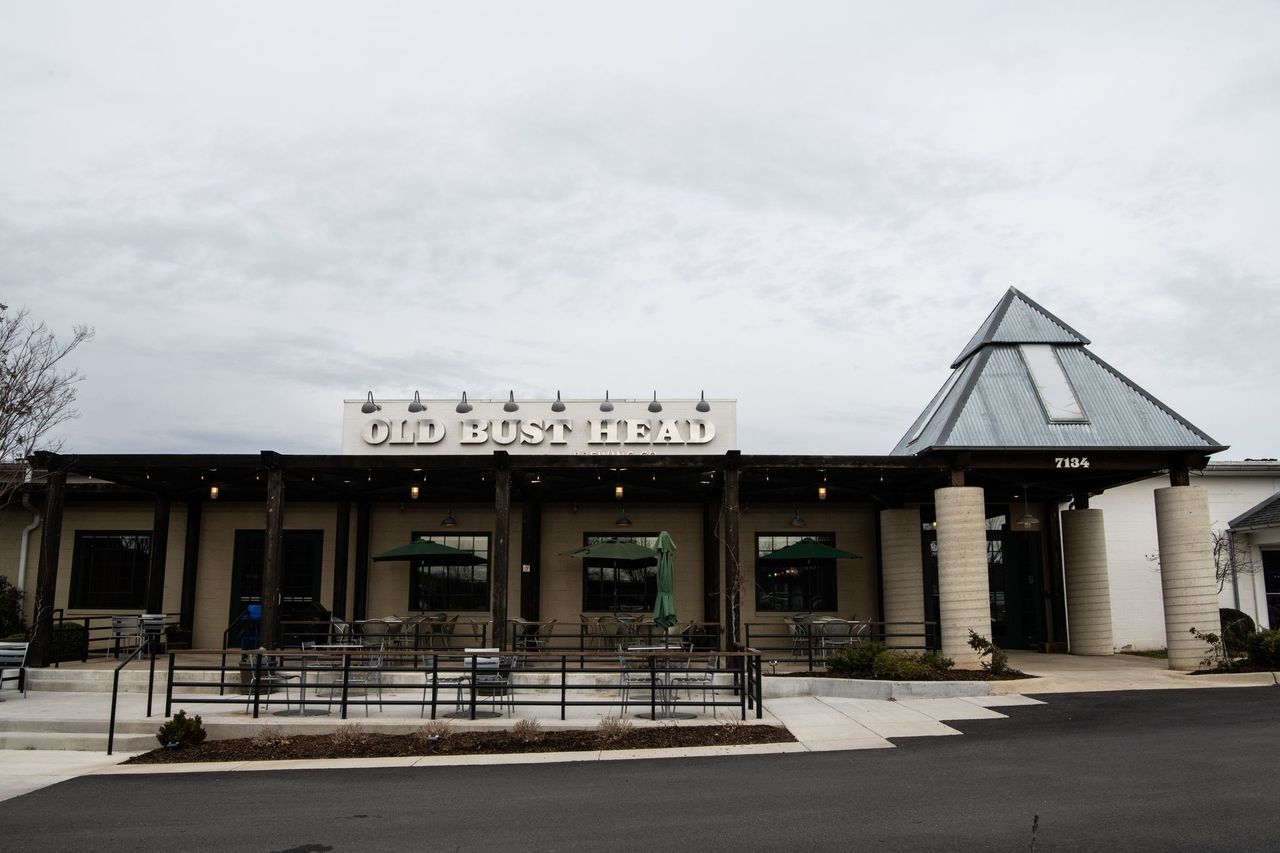
Old Bust Head Brewing Company Debuts New Carbon Capture Technology
Written by Victoria Peace
Photos by Michael Butcher
When Julie and Ike Broaddus founded Old Bust Head Brewing Company in 2014, they set out to create something that would make the lives of Vint Hill community members a little richer. Over the years, Old Bust Head’s robust calendar of events, welcoming atmosphere, and creative selection of beers have made the brewery a favorite of locals and out-of-towners alike. “You can have a plum and honey [beer], a beer that tastes like coffee, you can have a traditional Irish Red,” Julie explains. “It’s so much fun to taste the variety that we have.”
Even with the wide variety, “we do everything as sustainably as we can,” Julie emphasizes. At Old Bust Head, Julie and Ike want to show the world that you don’t have to sacrifice richness for sustainability. “When you do things sustainably, it makes life richer because you can feel good about what you are doing.”
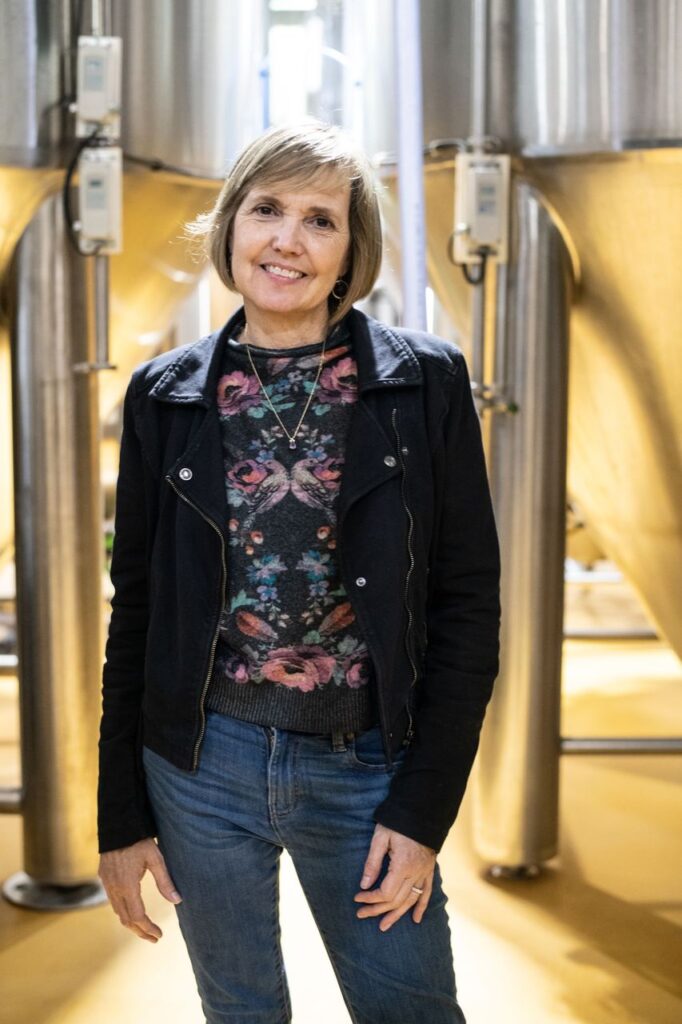
Last month, Old Bust Head unveiled new CiCi® carbon capture technology that will enable the brewery to further meet this sustainable mission by allowing it to capture CO2 emitted during fermentation and reuse it in other stages of the brewing process. Old Bust Head is one of the first craft breweries to use this type of technology in the nation.
“CO2 is a major ingredient in making beer,” Julie explains. It is used for carbonation, to push beer from one tank to the next, and to clean out the tanks and lines used to transport beer between different stages of the brewing process. “You don’t ever want your beer to touch oxygen,” Julie says. It can ruin the flavor and drastically reduce its shelf life.
Before purchasing the new technology, Old Bust Head needed to have large canisters of CO2 delivered regularly. However, now, “Our expectation is that we will almost not have to buy any outside CO2,” Julie says. Old Bust Head purchased its carbon capture system from Earthly Labs, a company that is dedicated to developing small-scale carbon capture solutions for breweries, farms, and other industry pioneers. “The technology has existed for a long time for larger breweries but it’s very new for breweries of our scale,” Julie explains.
Carbon capture technology is just one of many ways that Old Bust Head is dedicated to sustainability. From the start, Julie and Ike had “a really strong environmental focus.” Before opening the brewery, they dug eighteen 500-foot wells in what is now the parking lot in order to install a geothermal system. Using a geothermal system to heat and cool the brewery’s buildings greatly reduces Old Bust Head’s carbon footprint. In addition, Old Bust Head’s roof boasts the largest solar array of any brewery in the five-state area and the 64th largest array of any brewery in the world. According to Julie, 50% of the beer produced by Old Bust Head is brewed using solar energy.
Since the brewing process requires large amounts of hot water, “We do everything that we can to reduce the amount of heating we have to do,” Julie explains. “Everywhere that we are cooling things off, instead of just dissipating that heat, we capture it and use it to preheat water.” Through the installation of a series of heat exchangers, less energy is wasted boiling water because the water already starts off significantly warmer than room temperature. Old Bust Head also has a unit that filters rinse water so it can be reused. This system along with other water-saving measures that the taproom employs enables the brewery to use a third less water than it traditionally takes to produce a barrel of beer.
Old Bust Head’s sustainability doesn’t just stop with their facility and their technology — they also make sure that they produce as little waste as possible during the brewing process. During one of the first stages of brewing, hot water and barley are combined to make an oatmeal-like mash. The resulting liquid, called the “wort,” is then strained out of this mash and fermented with yeast to make beer. Instead of wasting the leftover barley, the Broaddus’ distribute it to local farmers to feed their cows.
Many small wastewater treatment plants don’t have the resources to adequately deal with the spent yeast that is left over once beer is done fermenting. If it is put directly down the drain, it risks ending up in rivers and ponds where it can cause algae blooms. To prevent this, Old Bust Head sends their spent yeast to a special facility where it can be disposed of properly to ensure the waste they are sending to wastewater plants is as clean as possible.
One of the most interesting things about visiting the Old Bust Head taproom is getting to visualize the direct impact that these sustainable choices have on the environment. The taproom has a screen which displays the brewery’s environmental statistics for the year in real time. You can see how much energy and how many hours of light the solar panels have generated, how many trees have been saved from being cut down, and how many pounds of coal have been saved from being burned.
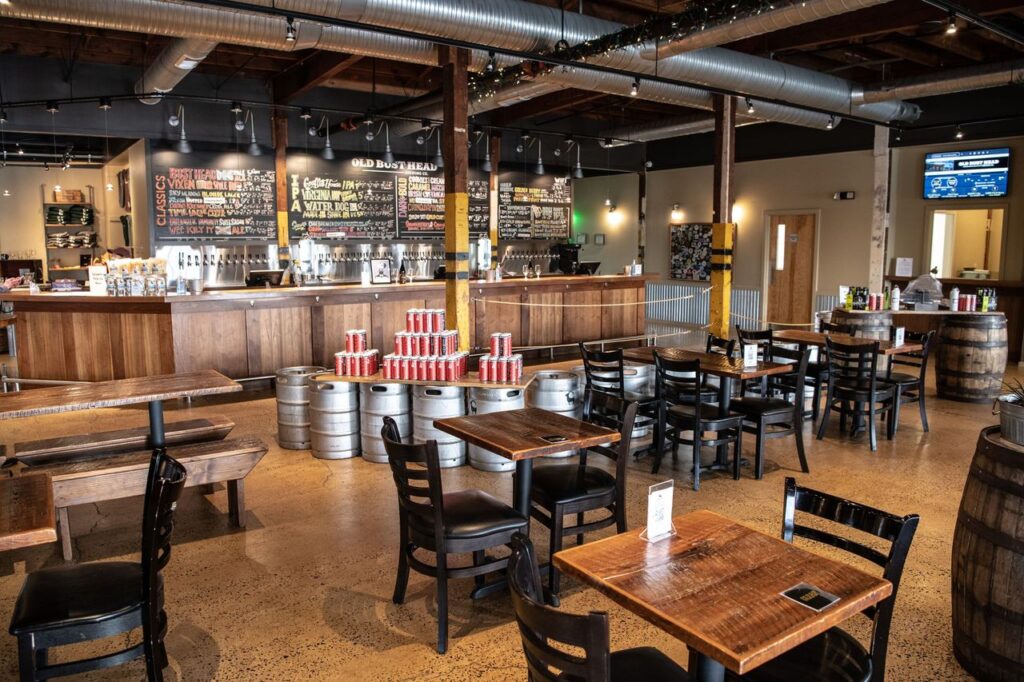
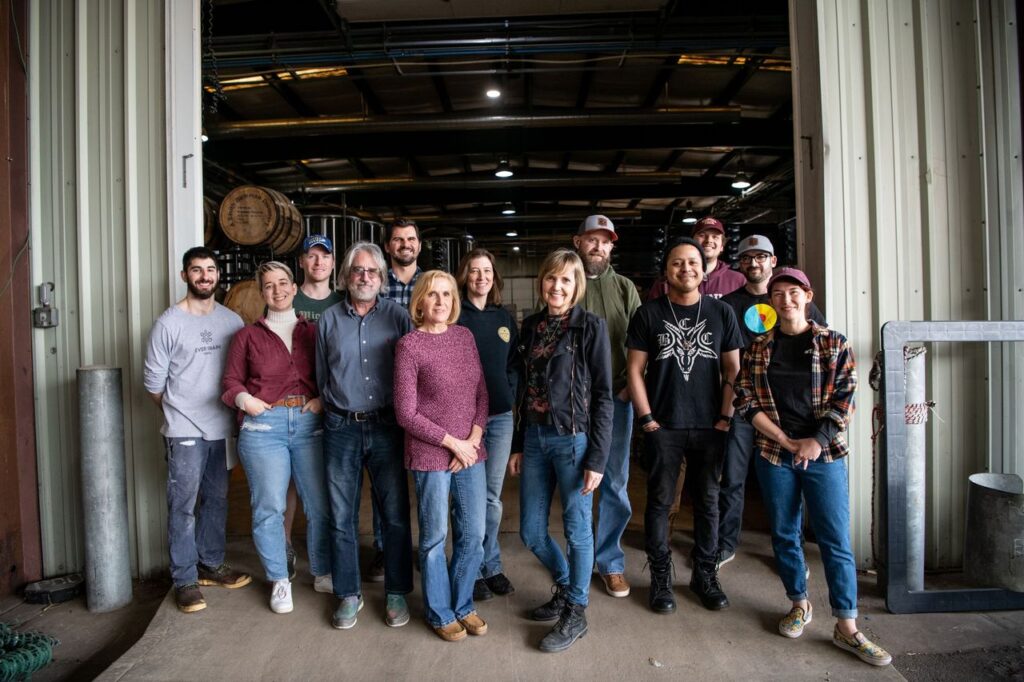
The Old Bust Head taproom is also unique for another reason — it was formerly used to house electronic warfare equipment back when Vint Hill Farms Station was used as a listening post for the Army. Vint Hill Farms Station was established in 1942 by the Army’s Signals Intelligence Service as a secure location to use as a cryptography school and as a refitting station for signal units. When the facility closed in 1997, the Virginia state government created the Vint Hill Economic Development Authority (VHEDA) to plan for its future. Ike Broaddus served as a member of this committee. When Old Bust Head’s first brewmaster, Charles King, approached him about using one of the buildings to start a brewery, he loved the idea. There were many developers interested in coming in and buying the land. However, “There were historic buildings there that deserved to be preserved,” Julie says. And the historic preservation of these buildings had the added benefit of aligning with Old Bust Head’s sustainability goals. After all, as their website states, “The greenest building is the one that is already there.”
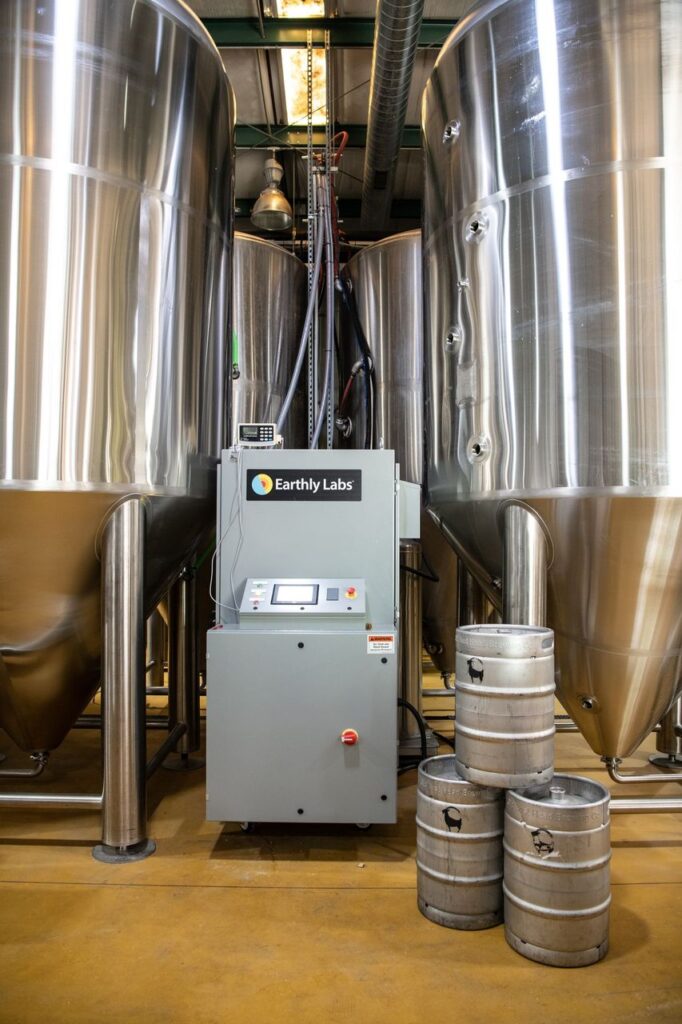
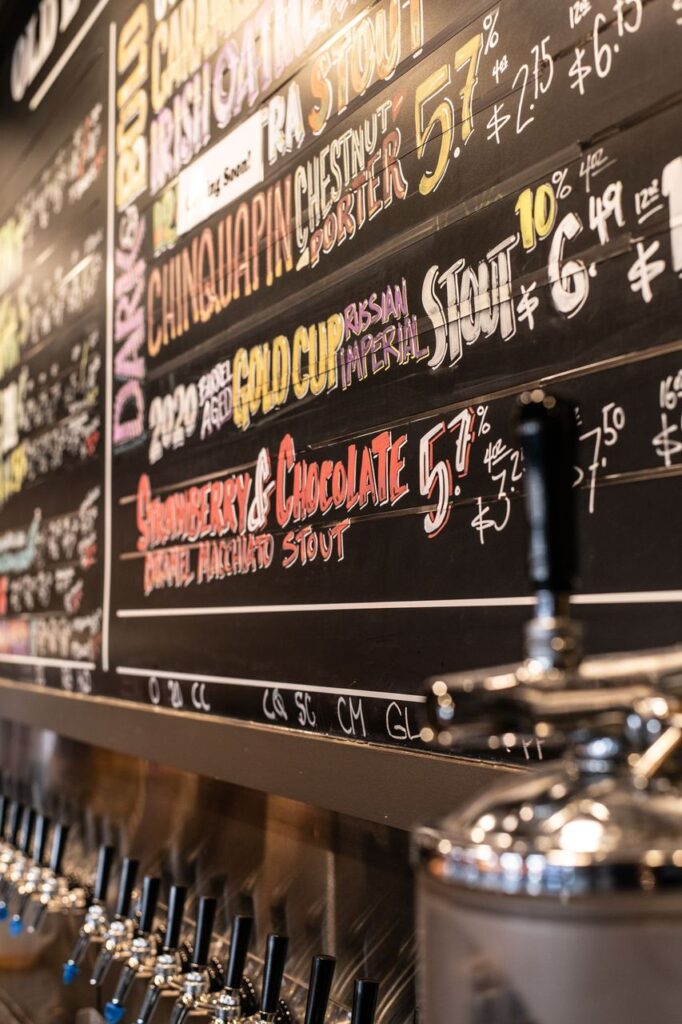
In late 2012 when the Broaddus’ first started planning, what is now the Old Bust Head taproom was a single-story cinder block structure with seven-and-a-half-foot ceilings and no windows. Julie describes it as a building that “only a mother could love.” After extensive renovations, it is now a light-filled space with plenty of room for patrons to mix and mingle while enjoying a glass of craft beer. However, the husband and wife team made sure to preserve elements of its historic character. The pillars in the space still sport the original yellow paint that the army used to ensure that drivers moving heavy equipment wouldn’t accidentally knock them over. Recent renovations unveiled last month include a new break room, a lab, expansions to the warehouse, and an event space for up to 100 guests.
While both Julie and Ike have had a strong passion for environmentalism since childhood, the driving force behind the sustainable mission at Old Bust Head is their daughter, Finley, who passed away in 2014 at age 18 from a rare form of liver cancer. “Finley was incredibly lighthearted, upbeat, and spirited. Yet, at the same time, everyone knew that she cared about climate change and the environment,” Julie says. “She did everything personally that she could and she tried to get everyone else to do what they could do to be kinder to the environment.”
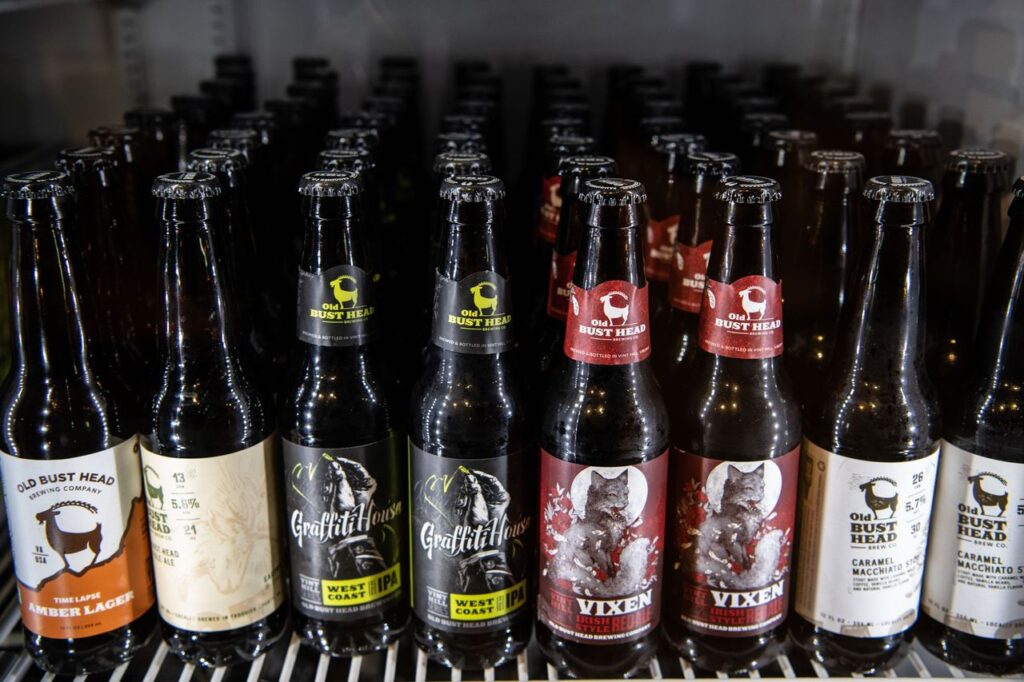
Each year, Julie and Ike invest in new sustainable practices in Finley’s honor. The solar array at the brewery, the heat exchangers that help pre-heat water, and the carbon capture technology are all examples of these investments. “We do everything we can to continue the thing she cared so much about,” Julie emphasizes. Last month, the ribbon cutting ceremony for Old Bust Head’s new carbon capture system was held on March 12 — Finley’s birthday. “Finley’s life was rich,” Julie says. “She worked to be as sustainable as possible and she is our inspiration.”
In terms of future investments, Julie would like to expand Old Bust Head’s solar array and switch from using glass bottles to aluminum cans. Many single stream recycling facilities around the brewery have stopped accepting glass bottles so cans have become a more environmentally friendly alternative.
At Old Bust Head Brewing Company, Julie and Ike strive to set an example for other small businesses by being as environmentally friendly as possible while also adding something special and exciting to the community. Like the brewing process for their craft beers, the sustainable methods they implement may take more time, investment, and experimentation to get just right. However, the end result adds a degree of richness to life that makes it all worthwhile. ML
This article first appeared in the April 2022 Issue.


